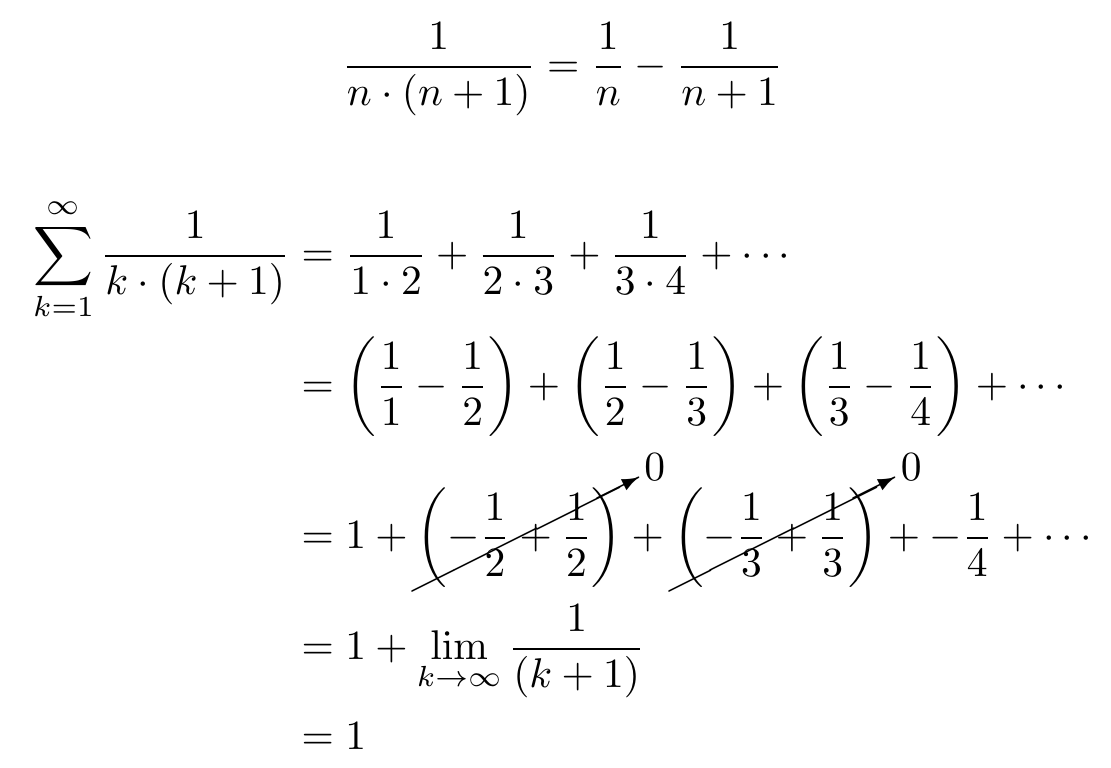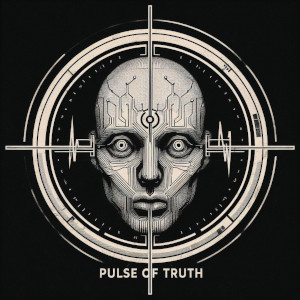AernaLingus [any]
- 1 Post
- 12 Comments
Davis states that the original source of the tale was Olayuk Narqitarvik. It was allegedly Olayuk’s grandfather in the 1950s who refused to go to the settlements and thus fashioned a knife from his own feces to facilitate his escape by skinning and disarticulating a dog. Davis has admitted that the story could be “apocryphal”, and that initially he thought the Inuit who told him this story was “pulling his leg”.
That’s a long payoff for a practical joke, but totally worth it.
Also, unsurprisingly, they won the 2020 Ig Nobel Prize in Materials Science (lol) for this one (video of the ceremony, Ig Nobel “lecture” from the lead author (also the primary pooper))
Written a bit more explicitly (although I kinda handwaved away the final term–the point is that you end up with one unpaired term which goes to zero)

edit: I was honestly confused about how exactly this related to the question, but seeing the comment from @yetAnotherUser@discuss.tchncs.de (not visible from Hexbear) which showed that the first sum in the image is equivalent to
the sum from n = 1 to ∞ of 2/(n * (n + 1))
made things clear (just take the above, put 2 in the numerator, and you get a result of 2)

 6·3 months ago
6·3 months agoThe original French quote appears to be from here. Stories link to another tweet (since privated) as the source of the translation, which quotes the first tweet, but it only differs from the embedded Google Translate result by a single word (“tasty” vs. “satisfying”). Here’s a video of the press conference with more context and a similar translation of that quote.
Whoa, that looks pretty sick. Definitely will give it a shot next time the need arises!
A good example of this in action is detailed in a book called “how the workers’ parliaments saved the Cuban Revolution”, by Pedro Ross.
That sounds like a fascinating book! I’ve always been interested in the nitty gritty of how the Cuban democratic process works, and this book seems accessible and is just under 200 pages (not including the appendices/bibliography) so I might actually get through it.
Here’s a temporary download if anyone wants to grab it (it’s also just on libgen if you prefer to find it yourself)
Here’s an insta of an actual Japanese wildlife photographer chock-full of great photos of this bird (among others)

 2·4 months ago
2·4 months agohttps://hexbear.net/comment/5105743
That comment has a MEGA link, and there’s also a magnet URI for a torrent in the replies

 2·5 months ago
2·5 months agoArchive link + full text of the referenced Financial Times article:
spoiler
Brussels is set to charge Apple over allegedly stifling competition on its mobile app store, the first time EU regulators have used new digital rules to target a Big Tech group.
The European Commission has determined that the iPhone maker is not complying with obligations to allow app developers to “steer” users to offers outside its App Store without imposing fees on them, according to three people with close knowledge of its investigation.
The charges would be the first brought against a tech company under the Digital Markets Act, landmark legislation designed to force powerful “online gatekeepers” to open up their businesses to competition in the EU.
The commission, the EU’s executive arm, said in March it was investigating Apple, as well as Alphabet and Meta, under powers granted by the DMA. An announcement over the charges against Apple was expected in the coming weeks, said two people with knowledge of the case.
These people said regulators have only made preliminary findings, and Apple could still take actions to correct its practices, which could then lead regulators to reassess any final decision. They added the timing of any announcement could also shift.
The EU could also decide to announce charges against other tech groups, with regulators still investigating whether Google parent Alphabet is favouring its own app store and Facebook owner Meta’s use of personal data for advertising.
If found to be breaking the DMA, Apple faces daily penalties for non-compliance of up to 5 per cent of its average daily worldwide turnover, which is currently just over $1bn.
The move comes as competition watchdogs around the world increase their scrutiny of Big Tech companies and their market dominance. In March, the US brought an antitrust case against Apple for allegedly using its power in the smartphone sector to squash rivals and limit consumer choice.
Epic Games, which sued Apple over the App Store in 2020, is also awaiting a decision from a California federal judge on whether Apple failed to comply with a US injunction prohibiting its steering rules, following a series of court hearings over recent weeks.
In January, Apple announced historic changes to its iOS mobile software, App Store and Safari browser in the EU.
The changes were an effort to placate regulators in Brussels and meant Apple would allow users to access rival app stores and download apps from other sources. The changes also included slashing the fee paid by companies using the App Store to sell digital goods and services from 30 per cent to 17 per cent.
However, the EU is also looking at whether these fee changes properly adhere to its new digital rules. Apple introduced new charges in Europe, including a “core technology fee” of 50 cents on developers with apps that have more than 1mn users for every first instalment by a user. Apple will also charge an additional 3 per cent fee to app developers that use its payment processor.
Some developers have argued they could face higher charges as a result of the fee changes. The EU could also announce initial charges over these developer fees, people familiar with the commission’s thinking said.
According to analysis by Sensor Tower, consumer spending on Apple’s App Store throughout the second quarter of 2024 was “relatively flat”, suggesting the EU rules have yet to affect the company’s bottom line.
Apple declined to comment but pointed to an earlier statement that said: “We’re confident our plan complies with the DMA, and we’ll continue to constructively engage with the European Commission as they conduct their investigations.”
The EU declined to comment.




One thing I’m confused about is why even the Japanese article referenced is just speculating, albeit in a more reasoned fashion–they use the fact that it’s a joint lawsuit from Nintendo and The Pokémon Company to narrow their focus to jointly-held patents in a relevant time range. I did a bit of Googling and one result said that you can only request court records if you know the case number, which is pretty wack if that’s the case. Like, PACER sucks and all (always check RECAP first and use their extension to upload documents for everyone!) but I’ve been following a random-ass civil court case in the US for about a year now and that’s shit is all online. Seems wild to me that even an intrepid reporter who marched on down to the courthouse wouldn’t be able to get their hands on the complaint. Big cases like this have ramifications far beyond the involved parties, so it’s important for the public to be able to see the arguments being made in detail.
DeepL translation of Japanese article
Nintendo and Pokémon Inc. filed a lawsuit against Pocket Pair, developer of Palworld, for patent infringement (Nintendo press release). As you know, there was some opinion that the modeling of the monsters in Palworld was similar to that of Pokemon, but it was difficult to question copyright infringement (they were close, but just barely avoided it). So Nintendo exercised its rights not by copyright but by patent right. An injunction and damages are being sought.
Palworld is not free to play, so I guess from the introduction videos on YouTube, etc., but aside from the monster sculpting, the game system does not seem to be that similar to Pokemon, and it seems to be an open-world game similar to Ark, etc. If there are similarities, it seems to be Balls. If there is a similarity, it is in the part where you capture monsters by throwing a ball-like object at them. If there is any similarity, it is the part where you throw a ball-like object at the monster to capture it.
Since Pokémon and Nintendo are jointly suing, we can naturally narrow the number of patents down to 28 if we assume that the patents are also jointly filed by the two companies. Of those 28, four were filed as divisional applications after PAL World went into service (January 19, 2024).
The one with the most recent filing date is patent 7545191. It was filed on July 30 of this year, requested for examination on August 6, requested for accelerated examination, and was already granted a patent on August 22. It is believed that the Super Accelerated Examination system was used.
The following patents follow: Patent No. 7528390 (filed on March 5 and registered on July 26), Patent No. 7493117 (filed on February 26 and registered on May 30), and Patent No. 7505854 (filed on February 6 and registered on June 17). All have requested accelerated examination (possibly super accelerated examination).
All are divisional applications of the December 22, 2021 application, so the effective filing date is December 22, 2021, and they are enforceable against Palworld, which entered service on January 19, 2024. It is believed that the scope of rights of the divisional application of the existing patent was amended to “pull in” the composition of the allegedly infringing property for use in litigation, a technique commonly referred to as “fitting in” (we wrote an explanatory article on this in the case of Konami’s lawsuit against Cygames “Uma Musume”). In terms of timing, it seems natural to assume that the lawsuit was filed pending the grant of these patents.
Let’s take a look at the contents of Patent No. 7493117, which is easy to understand and seems to have a broad scope of rights among these patents. Claim 1 reads as follows
In the end, what it is saying is that a ball (capture item) is thrown at a monster (field character), a successful capture decision is made, and if the capture is successful, the monster can be set to be owned, in which case the ease of successful capture is indicated by some indicator (not a number, but a color or design is also acceptable, according to the specification). This is all. If you want to make a Pokémon-like game, it may be difficult to avoid it, and if you are not aware of it, it may conflict with it. I feel that this is a killer patent. Other patents will be explained later.
Of course, there is no proof that these patents are used, and there is a possibility that other patents are used as well. It is also possible that Nintendo or Pokémon is filing another lawsuit using patents of which it is the sole owner. Nintendo is also known for its incredibly powerful patents, such as the patent used in the lawsuit against Coroplast (see related article), which restricts users to play games only with mutually registered users in communication games.
As was said during the lawsuit against Coroplast, it seems that Nintendo’s corporate policy is that even though they have a super-powerful patent portfolio, they do not actively enforce their rights themselves, but only fight thoroughly when their IP is about to be eroded.